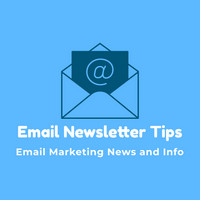An email newsletter can be a great way to stay connected with your audience, whether you’re running a business, a blog, or a community group. It allows you to share updates, promotions, and valuable content directly to your subscribers’ inboxes. If you’re thinking about creating your own email newsletter but don’t know where to start, don’t worry – we’ve got you covered!
First things first, you’ll need to choose an email marketing platform to help you create and send your newsletters. There are plenty of options out there, such as Mailchimp, Constant Contact, or ConvertKit. These platforms offer user-friendly interfaces and templates to make the process easy for beginners.
Once you’ve selected your email marketing platform, it’s time to start creating your newsletter. The key to a successful newsletter is to provide value to your subscribers. This could be through sharing informative articles, promoting your products or services, or offering exclusive discounts and deals.
When designing your newsletter, keep in mind that simplicity is key. Use a clean layout with a clear hierarchy of information. Include eye-catching images, but don’t overload your newsletter with too many visuals. Make sure your content is easy to read and understand.
Before you hit send, make sure to personalize your newsletter. Addressing your subscribers by their name can make a big difference in engagement. You can also segment your email list to send targeted content to specific groups of subscribers based on their interests or behaviors.
When it comes to the timing of your newsletter, consistency is key. Decide on a schedule that works for you and stick to it. Whether you send out your newsletter weekly, bi-weekly, or monthly, make sure your subscribers know when to expect it.
Don’t forget to optimize your email subject line to increase open rates. Keep it short and catchy, and make sure it accurately reflects the content of your newsletter. A compelling subject line can make all the difference in whether your subscribers decide to open your email or not.
After you’ve sent out your newsletter, don’t forget to track your performance. Most email marketing platforms offer analytics tools to help you monitor the success of your campaigns. Pay attention to metrics like open rates, click-through rates, and conversions to see what’s working and what’s not.
Lastly, don’t be afraid to experiment and try new things with your newsletter. Pay attention to feedback from your subscribers and be willing to make adjustments based on their preferences. The more you learn about what resonates with your audience, the more successful your email newsletter will be.
In conclusion, creating an email newsletter is a great way to connect with your audience and build relationships. By following these tips and putting in the effort to provide value to your subscribers, you can create a newsletter that keeps them engaged and coming back for more.
